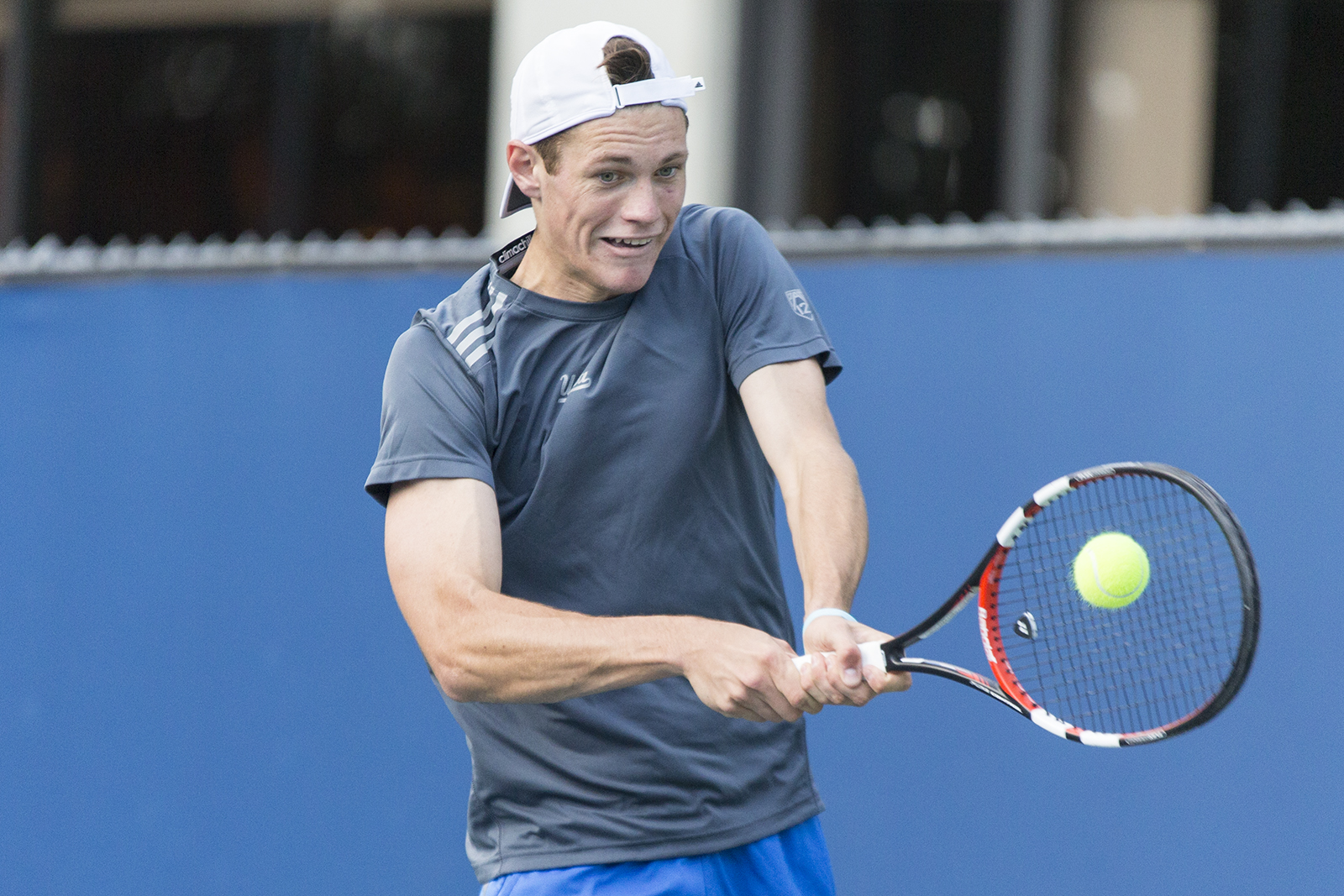Bruins’ hand signals point them to victory in doubles

Freshman Austin Rapp uses hand signals to communicate with his doubles partner, senior co-captain Dennis Mkrtchian. Coach Billy Martin attributes Rapp and Mkrtchian’s success to their on-court chemistry. (Aubrey Yeo/Daily Bruin senior staff)
By Lea Chang
May 13, 2015 1:56 a.m.
The most significant communications in sports are often the most subtle. Hand signals in doubles tennis fall into this category – easy to miss if they’re not looked for. Despite their unassuming nature, however, their implications can make or break any given point.
Hand signals consist of two parts.
For freshman Austin Rapp and senior co-captain Dennis Mkrtchian, the first utilizes a thumb, pinkie or index finger to indicate where the serve will go and the second dictates how the player at the net will move. A flat hand means crossing and poaching, while a closed fist shows that he will stay. Wiggling fingers signal a fake poach.
Choosing which hand signals to use and how to play the point depends heavily on the opponents’ playing style.
“If the guy’s struggling with his forehand return, we’ll go there and put some pressure on it, or if he doesn’t like a certain serve or if he’s going crosscourt every time, we’ll poach,” Rapp said.
While coach Billy Martin said that he thinks it’s good to have different hand signals across all three courts in case of scouting, he also said that he isn’t very worried about opponents figuring out the Bruins’ hand signals.
“It’s not rocket science, and (the point) happens so instantaneously after (the hand signals),” he said.
Mkrtchian and Rapp, however, think that signals are likely consistent not only within the UCLA men’s tennis team, but also across the sport at large.
“When it comes to hand signals, I think it’s pretty common throughout,” Mkrtchian said. “But we all play pretty differently.”
Mkrtchian said that the No. 1 doubles team tends to move up toward the net and the No. 2 team has a predilection for the “I” formation, but he and Rapp like to stay back during most points.
“We lead on his serve, his volleys come in well. Rapp comes up with big shots in big moments,” Mkrtchian said.
In addition to different strategies, every team has a different chemistry as well.
“Definitely since the season’s gone on, I feel more comfortable playing with him than at the start,” Rapp said. “Now I know what he’s doing before he even does it.”
Mkrtchian said that Rapp often finishes his sentences for him when he’s searching for a word to complete his thought.
“But I’ve seen it go the opposite way,” Martin said.
Martin added that it is sometimes the case that two players don’t end up being a good team because of the way they play individually.
“I can say, ‘God, that’s going to be a great team, they should complement each other,’ and there’s just no chemistry,” he said.
For the Bruins, that clearly hasn’t been the case this year – Rapp and Mkrtchian have won nine out of their last 10 completed matches.


